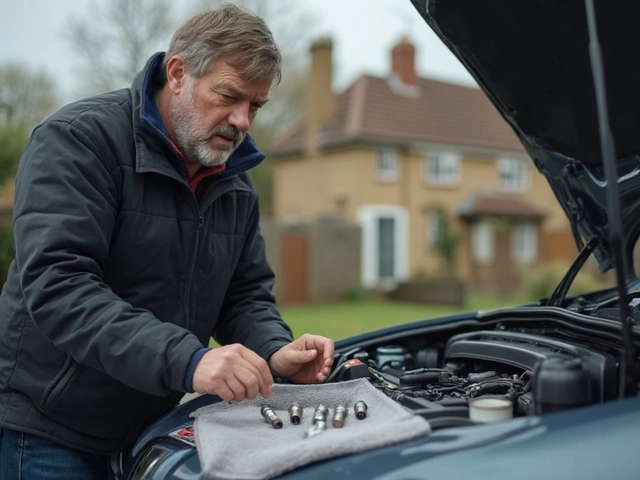Low Oil Warning: What It Means and How to Fix It
If that little oil can on your dash lights up, you’re probably thinking, "Can I keep driving?" The short answer is no – you need to stop, check the oil, and top it up before the engine takes a hit. Ignoring it can lead to serious wear, overheating, and even a seized engine.
Why the Low Oil Light Comes On
The warning isn’t random. Modern cars have an oil pressure sensor that watches how hard the pump works to push oil through the engine. If pressure drops, the sensor sends a signal and the light pops on. Common reasons include low oil level from a leak, oil that’s old and thin, a clogged filter, or a failing pump. In colder weather, oil can get thicker, making the pump work harder and sometimes triggering the light even if the level looks okay.
What to Do When the Warning Appears
First, pull over safely and turn the engine off. Let it sit for a minute so the oil can settle. Open the hood, locate the dipstick, pull it out, wipe it clean, re‑insert, and pull it out again. The markings will tell you if you’re below the “minimum” line. If the level is low, add the right grade of oil – check your owner’s manual for the exact type. Pour a little at a time, re‑check the dipstick, and stop when you hit the middle of the “green” zone.
If the oil level is fine but the light stays on, you might have a pressure problem. Turn the engine back on and listen for any unusual noises – ticking or knocking can mean the pump isn’t delivering enough oil. In that case, it’s best to call a mechanic or roadside assistance. Driving with a pressure issue can damage bearings, pistons, and the camshaft, leading to costly repairs.
To avoid future scares, keep an eye on your oil change schedule and check the level every few weeks, especially before long trips. Look for oil spots under the car; they could signal a leak that needs fixing. A quick visual inspection of the oil filter and a regular replacement every 5,000‑7,500 miles will keep the flow smooth. By staying on top of these simple steps, the low oil warning stays a rare surprise rather than a daily headache.
 15 February 2025
15 February 2025
How to Tell If Your Car Is Low on Oil: A Practical Guide
Keeping your engine oil at optimal levels is vital to your car's health and performance. This article guides you through the common signs of low oil levels in your vehicle, helping you prevent engine damage. Learn practical tips on checking oil levels and understanding oil warning indicators on your dashboard. Knowing what to watch for can save you from expensive repairs and keep your car running smoothly.






0